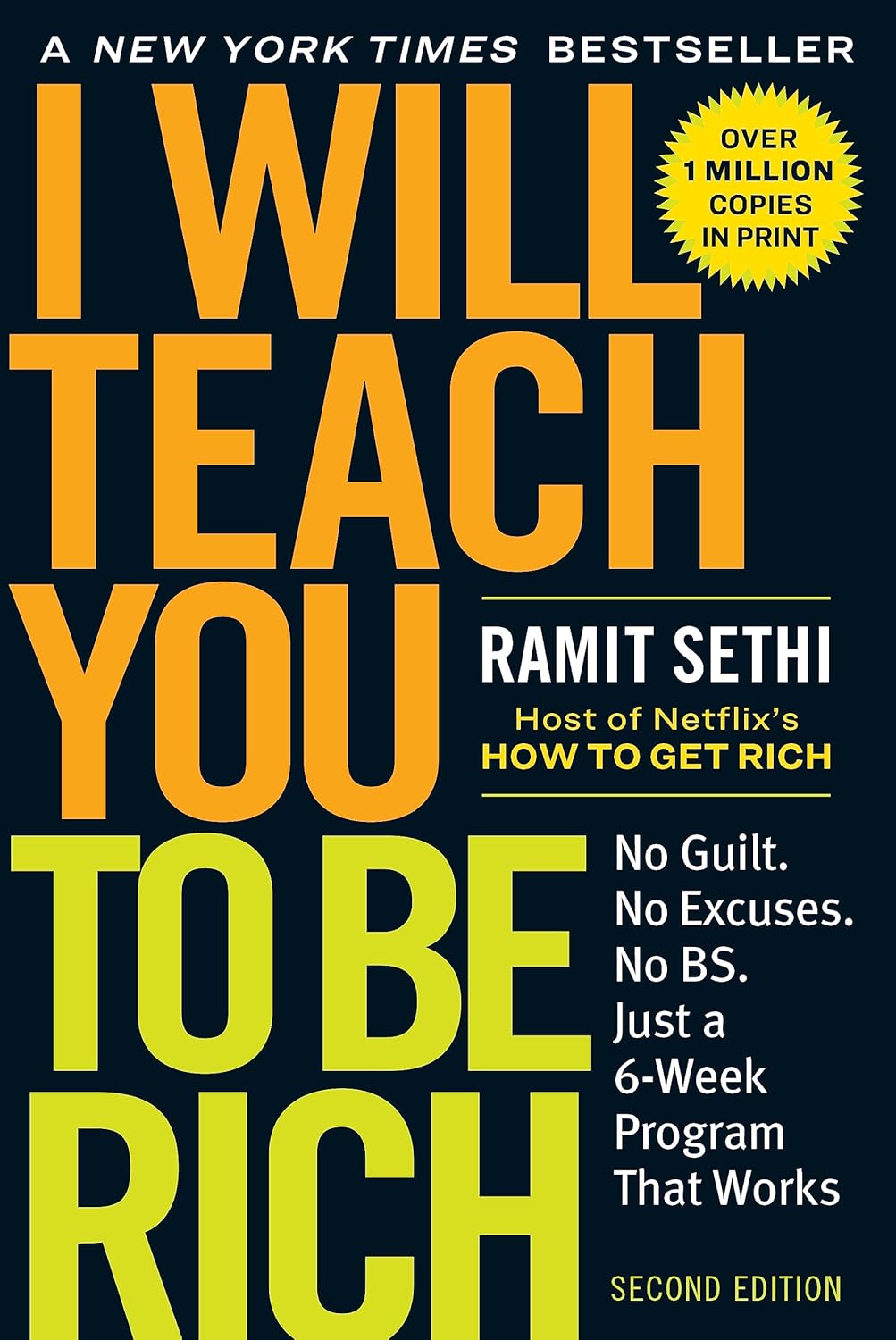
Buy The Book
Chapter
- ✦ The Rise Of The “Mighty Likeable Fellow”: How Extroversion Became The Cultural Ideal
- ✦ The Myth Of Charismatic Leadership: The Culture Of Personality, A Hundred Years Later
- ✦ When Collaboration Kills Creativity: The Rise Of The New Groupthink And The Power Of Working Alone
- ✦ Is Temperament Destiny: Nature, Nurture, And The Orchid Hypothesis
- ✦ Beyond Temperament: The Role Of Free Will (And The Secret Of Public Speaking For Introverts)
- ✦ “Franklin Was A Politician, But Eleanor Spoke Out Of Conscience”: Why Cool Is Overrated
- ✦ Why Did Wall Street Crash And Warren Buffett Prosper: How Introverts And Extroverts Think (And Process Dopamine) Differently
- ✦ Soft Power: Asian-Americans And The Extrovert Ideal
- ✦ When Should You Act More Extroverted Than You Really Are?
- ✦ The Communication Gap: How To Talk To Members Of The Opposite Type
- ✦ On Cobblers And Generals: How To Cultivate Quiet Kids In A World That Can’T Hear Them
- ✦ Wonderland
Quiet: The Power of Introverts in a World That Can’t Stop Talking

About
The book is a groundbreaking exploration of the undervalued strengths of introverts in a society dominated by extroversion. Cain, a former corporate lawyer and negotiations consultant, delves into the world of introversion with a blend of personal anecdotes, scientific research, and compelling narratives. The book challenges the cultural bias toward extroversion, which Cain terms the “Extrovert Ideal,” and highlights how introverted traits like thoughtfulness, persistence, and creativity can lead to success and innovation.
Cain introduces readers to influential introverts like Rosa Parks and Steve Wozniak, illustrating how their quiet strength and perseverance made significant impacts. She examines the biological and psychological roots of introversion, emphasizing that it is not a weakness but a legitimate personality trait with its own unique advantages. The book also provides practical advice for introverts to harness their strengths in various settings, from the workplace to personal relationships.
Susan Cain’s “Quiet” not only elevates the conversation about introverts but also empowers them to embrace their nature. Through her insightful and eloquent writing, Cain invites both introverts and extroverts to appreciate the silent power within.

Spark
Learn
Review
✦ The Rise Of The “Mighty Likeable Fellow”: How Extroversion Became The Cultural Ideal
Explores the profound cultural shift towards extroversion as the ideal personality type in the 20th century, this transformation began as America transitioned from an agricultural society to an urban, industrial powerhouse, creating a demand for individuals who could thrive in busy cities and competitive corporate landscapes. The shift necessitated a new set of social skills, favoring those who were outgoing, charismatic, and adept at networking.
During this period, self-help manuals and advertisements began to celebrate the extroverted personality. These materials painted a picture of success as inherently linked to sociability and likability, embodying the traits of the “mighty likeable fellow.” This archetype was seen as essential for achieving both professional success and social popularity.
This era marked the emergence of the “Culture of Personality,” where being bold, entertaining, and assertive became more valuable than possessing inner virtues or character. Public speaking became a sought-after skill, with individuals encouraged to sell not only their ideas but also themselves. This cultural shift was so pervasive that it influenced educational systems, workplace dynamics, and social interactions, embedding the extrovert ideal deeply into the fabric of American culture.
As society increasingly embraced this ideal, introverts often found themselves marginalized. Their quieter, more introspective nature was undervalued in a world that prized extroverted traits. The chapter sheds light on how this bias against introversion permeated various aspects of life, from schools to business environments, setting the stage for the ongoing challenges that introverts face today.
The narrative sets a foundation for understanding the cultural forces that have shaped perceptions of introversion and extroversion, highlighting the need to recognize and appreciate diverse personality types in a world that often overlooks the quiet strengths of introverts.
✦ The Myth Of Charismatic Leadership: The Culture Of Personality, A Hundred Years Later
The focus shifts to how society equates effective leadership with charisma and extroversion, this notion, deeply rooted in the early 20th century’s “Culture of Personality,” suggests that to lead successfully, one must possess a dynamic and outgoing nature. Figures like Dale Carnegie emphasized the importance of winning friends and influencing people, reinforcing the belief that charisma is essential for achievement.
Yet, this perception overlooks the significant qualities that many non-charismatic leaders possess. Charismatic leaders often dazzle with their energy and ability to inspire, but this can sometimes overshadow crucial traits like integrity, wisdom, and responsibility. In many cases, the emphasis on charisma may skew attention towards those who excel at self-promotion and public speaking, rather than those who lead through thoughtful decision-making and careful listening.
The allure of charisma can sometimes lead to leaders prioritizing their own visions over collective goals, potentially resulting in decisions that do not align with the broader needs of their teams or organizations. Furthermore, the preference for extroverted leadership styles can deter introverts from stepping into leadership roles, despite their potential to lead effectively through their own strengths, such as deep thinking and empathy.
Challenging the myth of charismatic leadership calls for a broader recognition of what constitutes effective leadership. Valuing a variety of leadership styles means acknowledging that quiet, introspective leaders can be just as impactful as their charismatic counterparts. This perspective encourages a shift away from the superficial allure of charisma toward a deeper appreciation of diverse leadership qualities.
By embracing this broader understanding, organizations and societies can benefit from a richer array of leadership approaches. Recognizing that impactful leadership doesn’t always come with a charismatic front allows for more inclusive and effective environments where diverse voices and styles can thrive. This understanding encourages the celebration of all leadership types and the unique strengths they bring to the table, fostering a more balanced and inclusive view of what it means to lead.
✦ When Collaboration Kills Creativity: The Rise Of The New Groupthink And The Power Of Working Alone
Critiques the prevailing trend of prioritizing teamwork and open-plan offices, which can often hinder creativity and productivity, the concept of the New Groupthink reflects a cultural shift towards constant collaboration, with the assumption that innovation flourishes in group settings. However, this overlooks the essential role that solitude plays in fostering creative thought and effective problem-solving.
Throughout history, many groundbreaking ideas and innovations have emerged from individuals working in isolation. Solitude offers the opportunity for deep concentration, reflection, and the freedom to explore ideas without the immediate need for consensus. In contrast, group settings can lead to conformity, where louder voices dominate discussions, potentially overshadowing quieter, yet innovative ideas. The pressure to conform and the fear of negative judgment can stifle the open exchange of diverse perspectives necessary for true innovation.
Open-plan offices, designed to encourage communication and collaboration, often result in constant distractions that disrupt focus. The noise and lack of privacy can be especially challenging for introverts, who may struggle to contribute effectively in such environments. This constant stimulation can lead to decreased productivity and creativity, as individuals find it hard to access the quiet needed for deep work and original thought.
Acknowledging the power of working alone does not diminish the importance of collaboration but calls for a more balanced approach. Creating work environments that respect the need for solitude while fostering opportunities for meaningful collaboration can maximize creativity and innovation. By valuing both individual and group work, organizations can tap into the full range of creative potential, allowing all personality types to contribute their best ideas. This approach promotes a culture where diverse working styles are recognized and supported, leading to more inclusive and effective environments for generating new ideas and solutions.
✦ Is Temperament Destiny: Nature, Nurture, And The Orchid Hypothesis
Explores the interplay between genetic predispositions and environmental influences in shaping personality. The central question revolves around whether temperament is a fixed trait or if it can be molded by experiences. This inquiry delves into the classic nature versus nurture debate, examining how both elements contribute to the development of introverted and extroverted traits.
Highlights the Orchid Hypothesis, a compelling theory suggesting that individuals, much like orchids, have varying degrees of sensitivity to their environments. Some people, akin to orchids, are highly responsive to their surroundings. In nurturing environments, they can thrive and reach exceptional levels of development. Conversely, in adverse conditions, they may struggle significantly. This contrasts with “dandelions,” who are more resilient and able to flourish across a wide range of circumstances without much variation in outcome.
Research indicates that introverted individuals may possess a heightened sensitivity to stimuli, which can be both an advantage and a challenge, depending on the context. This sensitivity allows for deep processing of information and emotions, contributing to creativity and empathy. However, it can also lead to overstimulation and stress in high-pressure or chaotic environments.
Genetic studies show that certain traits, like introversion, have a biological basis. Yet, they are not entirely deterministic. The chapter emphasizes the role of upbringing, culture, and personal experiences in shaping how these traits manifest. A supportive environment can enhance an introvert’s natural strengths, while a challenging one might suppress them.
Understanding the Orchid Hypothesis offers insight into how introverts can leverage their sensitivity as a strength rather than a limitation. It encourages creating environments that nurture individual differences, allowing sensitive individuals to thrive. This perspective advocates for recognizing the unique contributions of both introverted and extroverted personalities, promoting a more inclusive society that values diverse temperaments.
Ultimately, it suggests that while temperament has a biological foundation, it is not an unchangeable destiny. The dynamic interplay between nature and nurture allows for growth and adaptation, enabling individuals to transcend their inherent predispositions and flourish in various aspects of life.
✦ Beyond Temperament: The Role Of Free Will (And The Secret Of Public Speaking For Introverts)
Delves into how individuals can transcend their innate traits through conscious choice and effort, while temperament provides a baseline, it is not an absolute determinant of one’s capabilities. This section particularly focuses on public speaking, a common challenge for introverts, illustrating how they can excel by tapping into their inner strengths.
Temperament may incline individuals toward certain behaviors, but it does not dictate them entirely. The power of choice allows people to adapt and refine their abilities. For introverts, who might naturally avoid the limelight, mastering public speaking can seem formidable. Yet, with intentional practice, introverts can thrive by using their distinctive qualities to their advantage.
Often characterized by thorough preparation, introspection, and empathy, introverts possess inherent skills that can enhance their speaking abilities. By concentrating on understanding their material and conveying their genuine perspectives, introverts can forge deep connections with their audience. The secret lies in preparation and authenticity, enabling introverts to deliver presentations that reflect their true selves rather than mimicking extroverted styles.
Employing strategies such as storytelling, meticulous planning, and controlled breathing can help introverts manage anxiety and improve their presentation skills. These approaches encourage introverts to view public speaking as a natural extension of their communication style. By focusing on delivering meaningful content, introverts can transform public speaking from a source of apprehension into an avenue for powerful self-expression.
While temperament provides a framework for initial tendencies, free will empowers individuals to expand beyond these limits. Introverts can choose to cultivate skills that may not be instinctive, broadening their horizons. This emphasis on personal agency highlights the potential for introverts to succeed in areas typically dominated by extroverts.
Ultimately, personal growth is not confined by temperament. By embracing free will, introverts can approach challenges like public speaking with assurance, turning perceived weaknesses into strengths. This journey from self-awareness to skillful expression showcases how introverts can harness their nature to achieve success and impact.
✦ “Franklin Was A Politician, But Eleanor Spoke Out Of Conscience”: Why Cool Is Overrated
Explores the contrasting leadership styles of Franklin and Eleanor Roosevelt, illustrating how both extroverted and introverted traits can lead to effective influence and change. Franklin Roosevelt, renowned for his political savvy, embodied an extroverted approach to leadership. His charisma, strategic thinking, and ability to engage with the public made him a formidable figure in the political arena, adept at rallying support and navigating complex political landscapes.
In stark contrast, Eleanor Roosevelt’s influence emerged from her introspective and principled nature. Rather than relying on charisma, Eleanor’s leadership was driven by a deep sense of moral responsibility and compassion. She focused on social justice, civil rights, and humanitarian efforts, often addressing issues that were neglected or controversial. Her authentic and empathetic approach allowed her to connect with individuals on a personal level, making her a powerful advocate for change.
This comparison highlights the diverse paths to leadership, suggesting that both extroverted and introverted qualities can be equally impactful. Franklin’s leadership was characterized by his ability to galvanize public opinion and implement policy through his extroverted charm and assertiveness. In contrast, Eleanor’s influence, though quieter, was profound and enduring, driven by her commitment to speaking out for the marginalized and advocating for meaningful societal change.
Eleanor’s legacy exemplifies the potential of conviction-driven leadership. Her dedication to advocating for those without a voice and her ability to inspire change through thoughtful action demonstrate that effective leadership does not require adherence to extroverted ideals. Instead, her story encourages a reevaluation of leadership definitions, urging recognition of diverse styles that value introspection, empathy, and moral clarity.
Ultimately, it calls for a more inclusive understanding of leadership that embraces the strengths of both introverted and extroverted individuals. By appreciating the unique contributions of varying personality types, society can foster a richer and more dynamic landscape of leadership. This broader perspective allows for a tapestry of influence shaped by both the charismatic and the conscientious, ensuring that diverse voices and approaches are represented in the pursuit of progress and change.
✦ Why Did Wall Street Crash And Warren Buffett Prosper: How Introverts And Extroverts Think (And Process Dopamine) Differently
Examines the contrasting decision-making styles and risk tolerance of typical Wall Street traders versus Warren Buffett, highlighting how introverted traits can lead to long-term success in the financial world. The 2008 financial crisis serves as a backdrop to explore how impulsive risk-taking, often driven by extroverted tendencies, contributed to the market’s downfall.
Wall Street, at the time, was dominated by a culture valuing quick decisions and high-risk ventures, traits often associated with extroversion. Traders, driven by the excitement of the market and the pressure to deliver short-term gains, frequently engaged in speculative investments without thorough analysis. This emphasis on rapid action and immediate results led to reckless behavior, ultimately contributing to the financial crash.
In contrast, Warren Buffett’s success stemmed from a markedly different approach. Buffett, known for his introverted nature, exemplifies patience, careful analysis, and a preference for long-term value over short-term excitement. His investment philosophy focuses on understanding the fundamentals of a business and assessing its intrinsic value, rather than being swayed by market trends or peer pressure. This methodical and reflective strategy allowed Buffett to identify and invest in solid companies, ensuring steady growth and resilience even during economic downturns.
Buffett’s approach highlights the advantages of introverted qualities in decision-making, such as thoroughness, patience, and the ability to remain calm under pressure. These traits enable investors to make informed decisions based on long-term potential rather than immediate gratification or external validation.
The narrative underscores the importance of diverse perspectives in the financial industry, advocating for a balance between extroverted dynamism and introverted deliberation. By valuing both styles, the industry can mitigate risks and foster sustainable growth.
Ultimately, it emphasizes that success in complex environments like finance often requires a blend of traits. Introverted strengths, such as careful consideration and a focus on intrinsic value, can provide stability and insight, illustrating how varied approaches contribute to enduring prosperity and resilience in the face of market volatility.
✦ Soft Power: Asian-Americans And The Extrovert Ideal
Delves into the cultural challenges Asian-Americans face in a society that often prizes extroverted traits, this exploration reveals how cultural backgrounds shape perceptions of introversion and extroversion, especially in American schools and workplaces where extroversion is frequently the standard.
In many Asian cultures, qualities like humility, respect, and group harmony are prioritized, aligning more closely with introverted characteristics. These values often emphasize listening over speaking and thoughtful reflection over assertive behavior. In contrast, Western cultures, particularly within the United States, celebrate traits such as assertiveness, verbal expressiveness, and individualism, often reflecting extroverted ideals.
Asian-Americans often find themselves navigating these conflicting cultural expectations. In environments that reward extroverted behaviors, individuals from Asian backgrounds may feel compelled to conform to these norms, potentially experiencing cultural tension. This can lead to difficulties with self-promotion and participation in group discussions, where assertiveness is sometimes equated with competence.
Despite these challenges, “soft power” emerges as a significant strength. Soft power involves leading and influencing through subtlety, empathy, and building relationships rather than through overt dominance. Asian-Americans frequently excel in these areas, offering perspectives that emphasize collaboration and deep understanding. These introverted strengths contribute to strong team dynamics and thoughtful leadership, providing a balance to traditional extroverted methods.
The narrative highlights the importance of embracing diverse cultural perspectives in settings that typically favor extroversion. By recognizing the value of introverted qualities and cultural diversity, organizations can foster more inclusive environments that appreciate varied contributions. This approach encourages a rethinking of effective communication and leadership, broadening the definition to encompass both extroverted and introverted traits.
Ultimately, it calls for a nuanced appreciation of cultural and personality differences. By valuing soft power and the unique qualities it offers, society can enrich interactions and harness the full scope of human potential, creating environments where all individuals have the opportunity to thrive.
✦ When Should You Act More Extroverted Than You Really Are?
Navigates the delicate balance between staying true to your introverted nature and strategically adopting extroverted behaviors when beneficial. In environments where extroversion is often rewarded, such as networking events, presentations, or leadership roles, temporarily stepping out of your comfort zone can lead to significant personal and professional growth.
As an introvert, you might find value in adopting extroverted traits without altering your fundamental personality. This involves selectively engaging in behaviors that help you achieve specific goals. In professional settings, for example, presenting a more outgoing demeanor can enhance networking and collaboration, crucial elements for career advancement. Thorough preparation can boost your confidence in these interactions; consider rehearsing conversations or setting clear engagement goals to manage the energy these situations demand.
In leadership roles, where visibility and clear communication are essential, you can blend your strengths—such as empathy and deep thinking—with extroverted behaviors like assertive communication and proactive engagement. This combination allows you to maintain authenticity while meeting role demands effectively.
Balancing these strategies with self-care is vital. While adopting extroverted behaviors can be advantageous, it’s crucial to recharge and return to your natural state. Recognizing your limits and ensuring time for solitude and reflection will prevent burnout and maintain your well-being.
Ultimately, strategic adaptation becomes your tool. By understanding when and how to act more extroverted, you can navigate various situations successfully without losing your authentic self. This empowers you to leverage both inherent strengths and learned behaviors, fostering growth and enhancing your ability to thrive in diverse environments. Through mindful adaptation, you can achieve a harmonious balance between your true nature and the demands of extroverted contexts, allowing you to flourish both personally and professionally.
✦ The Communication Gap: How To Talk To Members Of The Opposite Type
Focuses on bridging the divide between introverts and extroverts in communication, understanding the distinct communication styles of both types can enhance interactions and foster mutual respect.
As an introvert, you might prefer deep, meaningful conversations and require time to process information before responding. Extroverts, on the other hand, often thrive in spontaneous discussions and think out loud, which can sometimes feel overwhelming. Recognizing these differences is the first step in improving communication.
When engaging with extroverts, consider embracing their need for active dialogue by participating in lively exchanges while also setting boundaries that allow you space to reflect. You can express your need for time to process by suggesting a follow-up discussion, which respects both your style and theirs. This approach balances your need for contemplation with their preference for immediacy.
For extroverts interacting with introverts, it’s helpful to appreciate their need for thoughtful responses and give them the space to articulate their thoughts without pressure. Encourage them to share perspectives by asking open-ended questions and allowing pauses in conversation. This patience can lead to richer, more insightful discussions, capitalizing on the introvert’s capacity for deep thinking.
Creating an environment where both styles are valued involves active listening and empathy from both parties. By acknowledging the strengths each type brings to the conversation, you can foster a collaborative atmosphere. For example, introverts might provide depth and insight, while extroverts can contribute energy and new ideas.
Effective communication between introverts and extroverts also involves adapting your style to suit the context. In professional settings, this might mean preparing in advance to accommodate b oth detailed and dynamic discussions. In personal relationships, it can involve finding a rhythm that respects each person’s communication preferences.
Ultimately, bridging the communication gap requires understanding, flexibility, and respect for the unique qualities each personality type offers. By valuing and integrating these differences, you can enhance relationships, create more inclusive environments, and enjoy more fulfilling interactions with both introverts and extroverts. Understanding how to adapt and communicate across types enriches connections and fosters a deeper appreciation for diverse perspectives.
✦ On Cobblers And Generals: How To Cultivate Quiet Kids In A World That Can’T Hear Them
Explores nurturing introverted children in a society that often favors extroversion. Recognizing the unique strengths of quiet kids is essential to help them thrive amidst louder voices.
As a parent or educator, understanding that introverted children might prefer solitary activities or smaller group interactions is crucial. They often need time to recharge after social events and may express themselves more fully in settings where they feel comfortable and safe. Creating environments that respect these preferences can foster confidence and growth.
Encourage quiet kids by providing opportunities for them to explore their interests deeply. Rather than pushing them into activities that require constant social interaction, offer choices that align with their passions, whether it’s reading, art, or science. By supporting their interests, you can help them build self-esteem and develop their talents.
In school settings, advocating for teaching methods that accommodate different learning styles is vital. Encourage educators to use a mix of group and individual activities, allowing introverted students to shine in environments that suit them. Teachers can facilitate this by offering written assignments for those who process information internally and by creating smaller discussion groups.
Helping quiet kids develop social skills without forcing extroverted behaviors is also important. Role-playing and gentle encouragement can provide practice in social settings, helping them navigate interactions at their own pace. Emphasize the value of listening and observation, which are often natural strengths of introverted children.
Communicating the importance of accepting and valuing their introverted traits is crucial. Reinforce that being quiet is not a flaw but a different way of engaging with the world. Highlight successful introverted role models who have made significant contributions, demonstrating that their unique perspectives and approaches are valuable.
Ultimately, fostering an inclusive atmosphere that celebrates diverse personalities helps quiet kids flourish. By recognizing their needs and honoring their strengths, you can nurture their potential and help them develop into confident, capable individuals. In a world that often overlooks quieter voices, your support and understanding can empower introverted children to embrace their true selves and succeed on their terms.
✦ Wonderland
The journey through understanding introversion culminates in a celebration of diverse personality traits. Embracing your introverted nature means recognizing the power of quiet strength and thoughtful reflection in a world that often favors extroverted qualities. This realization encourages you to navigate life with authenticity, valuing the unique perspectives you bring to the table.
By fostering environments that appreciate both introverted and extroverted traits, you contribute to a more inclusive society. Whether it’s in personal relationships, the workplace, or educational settings, acknowledging and respecting these differences enriches interactions and fosters a deeper understanding.
Ultimately, the true wonder lies in appreciating the full spectrum of human personality. By embracing who you are and recognizing the strengths within your quieter nature, you can create a world that celebrates diversity and empowers everyone to thrive, regardless of where they fall on the introversion-extroversion continuum.
For People
– Introverts seeking validation
– Extroverts wanting to understand introverts
– Educators and teachers
– Corporate leaders and managers
– Individuals interested in psychology
Learn to
– Understanding introversion
– Embracing personal strengths
– Improving interpersonal relationships
– Enhancing leadership skills
– Fostering creativity and innovation









